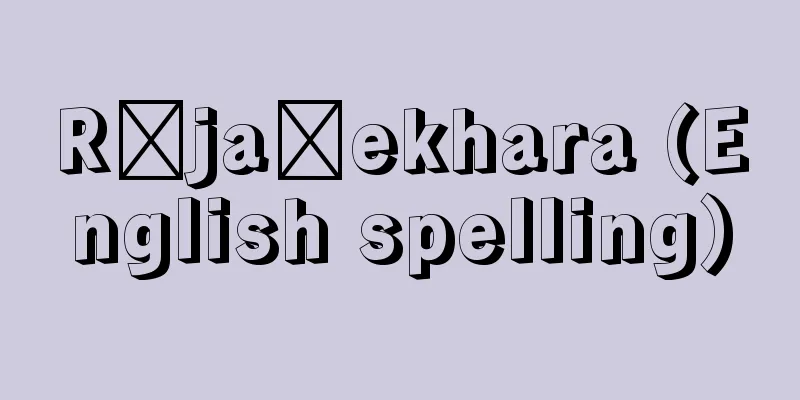Employment insurance

|
This insurance system provides unemployment benefits and childcare leave benefits when workers lose their jobs, and also provides two employment insurance programs (employment stabilization programs and ability development programs). It is based on the Employment Insurance Act (Act No. 116 of 1974). It was launched in 1975 (Showa 50) to replace the previous unemployment insurance. Unemployment benefits include job seeker benefits for the unemployed, employment promotion benefits, education and training benefits, and continued employment benefits (continued employment benefits for the elderly, and nursing care leave benefits). Of the above two programs, employment stabilization programs include employment adjustment subsidies and subsidies to support labor mobility and regional employment development, while ability development programs include subsidies for the establishment and operation of vocational ability development facilities and ability development by employers. In principle, employment insurance applies to all businesses, but it is provisionally available on a voluntary basis to private businesses with fewer than five employees in the agriculture, forestry and fisheries industries, and public servants are exempt. Workers employed in applicable businesses are automatically insured under employment insurance. As of January 2017, employment insurance has also been applied to those employed after the age of 65, who were previously exempt. The cost of employment insurance is covered by the insurance premiums paid by the employer and the insured, and by the national treasury. The insurance premium rate for unemployment benefits and childcare leave benefits is 0.6% of the total wage (2020-2021), which is shared between the employer and the insured. The insurance premium rate for the two businesses is 0.3% (2020-2021), which is paid in full by the employer. The insurance premium rates for the agriculture, forestry and fisheries, sake brewing and construction industries are slightly higher because of the large number of seasonal workers and high unemployment rates. The national treasury's contribution is generally 25% for job seeker benefits and 12.5% for continued employment benefits (excluding continued employment benefits for older workers), but since 2007, it has been reduced to 13.75%, or 55% of the original contribution, for job seeker benefits (2.5%, or 10%, as a temporary measure for 2020-2021). In addition, in 2020 (Reiwa 2), the Act on Temporary Special Measures of the Employment Insurance Act (Act No. 54 of Reiwa 2) was enacted to respond to the impact of the new coronavirus disease (COVID-19), etc., and it was made possible to carry out businesses, etc. that provide COVID-19 Leave Support Grants to workers who were forced to take leave due to the impact of COVID-19, etc. and were unable to receive wages during their leave. In addition, special measures were taken under the Employment Insurance Act to extend the number of days for which basic unemployment insurance benefits can be paid up to 60 days and the benefit period up to 3 years. [Yasuhiko Yamazaki November 13, 2020] [Reference items] | | | |Source: Shogakukan Encyclopedia Nipponica About Encyclopedia Nipponica Information | Legend |
|
労働者が失業した場合などの失業等給付および育児休業給付を支給するともに、雇用保険二事業(雇用安定事業、能力開発事業)を行う保険制度。雇用保険法(昭和49年法律第116号)に基づく。従来の失業保険にかわって1975年(昭和50)に発足した。 失業等給付には、失業者への求職者給付のほか、就職促進給付、教育訓練給付、雇用継続給付(高年齢雇用継続給付、介護休業給付)がある。また前記2事業のうち、雇用安定事業には、雇用調整助成金、労働移動や地域雇用開発を支援する助成金等があり、能力開発事業には、職業能力開発施設の設置運営、事業主による能力開発に対する助成金等がある。 雇用保険は、原則としてすべての事業を適用対象としているが、農林水産業の5人未満の個人事業は暫定的に任意適用で、公務員は適用除外になっている。適用事業に雇用される労働者は当然に雇用保険の被保険者になる。なお、従来は適用除外とされていた65歳以降に雇用された者についても、2017年(平成29)1月から、雇用保険が適用されている。 雇用保険の費用は、事業主と被保険者が負担する保険料と国庫負担によりまかなわれる。失業等給付・育児休業給付の保険料率は賃金総額の0.6%(2020~2021年度)で、事業主と被保険者が折半して負担する。二事業の保険料率は0.3%(2020~2021年度)で、全額を事業主が負担する。なお、農林水産業、清酒製造業および建設業については、季節的労働者が多く失業の発生率が高いため、やや高い保険料率になっている。国庫負担は、求職者給付の25%、雇用継続給付(高年齢雇用継続給付を除く)の12.5%が原則であるが、2007年から当分の間、求職者給付については本来の負担額の55%にあたる13.75%(2020~2021年度は時限措置として10%にあたる2.5%)に引き下げられている。 なお、2020年(令和2)には、新型コロナウイルス感染症(COVID(コビッド)-19)等の影響に対応するための雇用保険法の臨時特例等に関する法律(令和2年法律第54号)が制定され、新型コロナウイルス感染症等の影響により休業させられた労働者のうち、休業中に賃金を受けることができなかったものに対して新型コロナウイルス感染症対応休業支援金を支給する事業等を行うことができることとした。また、雇用保険の基本手当の給付日数を最大60日に、受給期間を最大3年に延長する雇用保険法の特例措置等を講じた。 [山崎泰彦 2020年11月13日] [参照項目] | | | |出典 小学館 日本大百科全書(ニッポニカ)日本大百科全書(ニッポニカ)について 情報 | 凡例 |
<<: Goyomatsu (Japanese white pine) - Goyomatsu (English spelling) Japanese white pine
Recommend
Rudzutak, Ya.E. (English spelling) RudzutakYaE
In addition to the show trials of former oppositi...
Adi Buddha - Aadi Buddha
...Buddha as the origin of the universe. It is us...
Bowley, AL
...I. Fisher came up with several test criteria f...
Rounded vowels
A vowel pronounced by rounding the lips. In Englis...
Peace of Cambrai
…After defeating Francis I at the Battle of Pavia...
Redama - Redama
It is a deciduous or evergreen shrub of the legum...
Messier Star Catalogue
A list of nebulae and star clusters created by the...
Jordanus de Nemore
A mechanician and mathematician active around 1220...
Standard Displacement - Kijunhaisuiryou
One of the methods of measuring and indicating the...
Squid Streamer
…The character for kite is a Japanese character. ...
Oku Teruyuki Attachment - Oku Teruyuki Attachment
…It seems likely that someone compiled many secre...
Caesarea
…Population: 454,000 (1994). An ancient trading c...
Pribilof Islands - Pribilof
A group of volcanic islands in the US state of Ala...
Ubagami - Ubagami
…The figure of an old woman who appears with the ...
Dancer - Odoriko
〘 noun 〙① A girl who dances. Especially a girl who...









